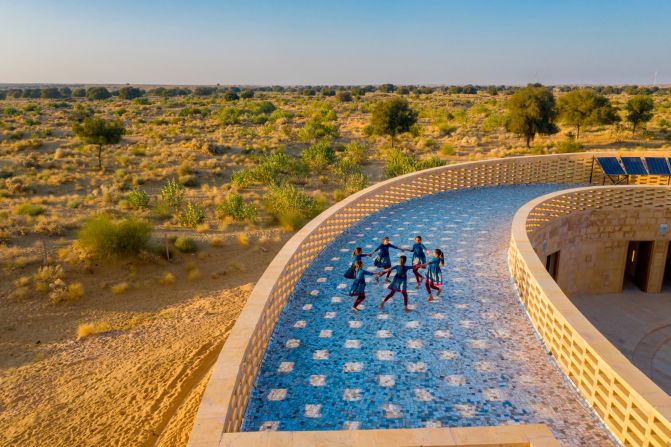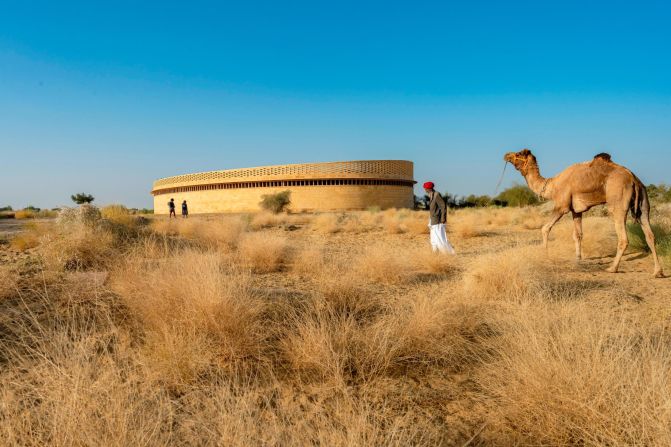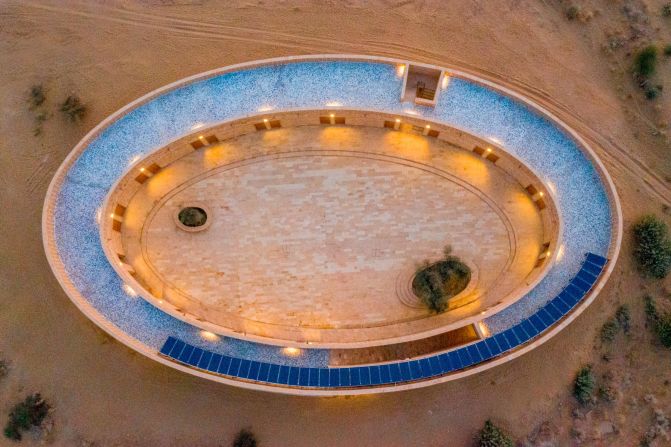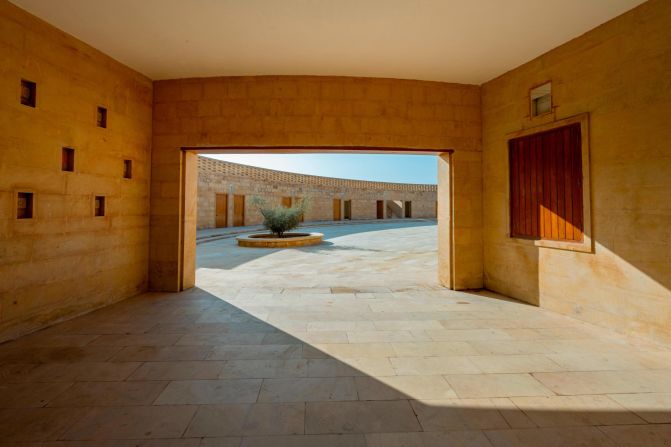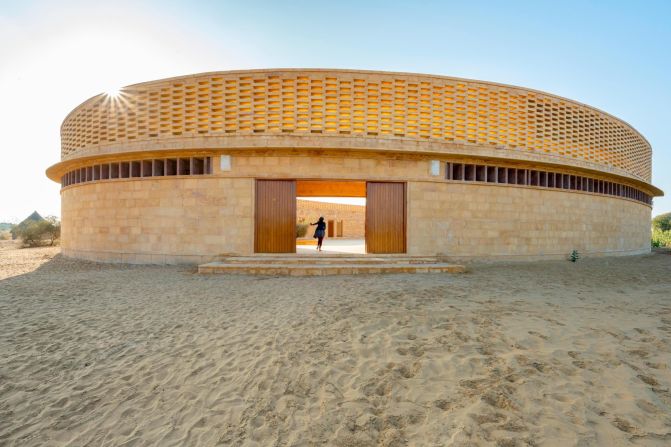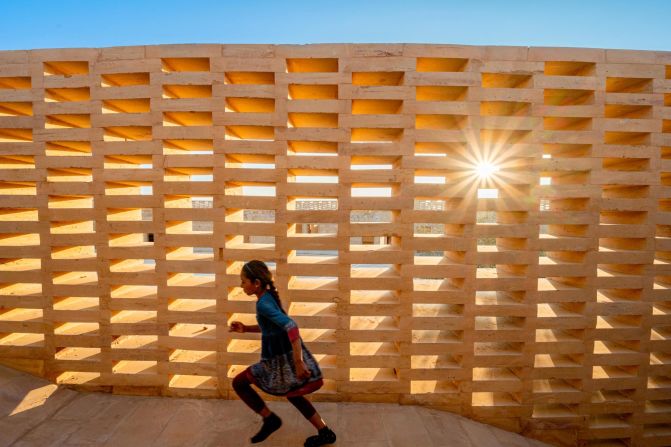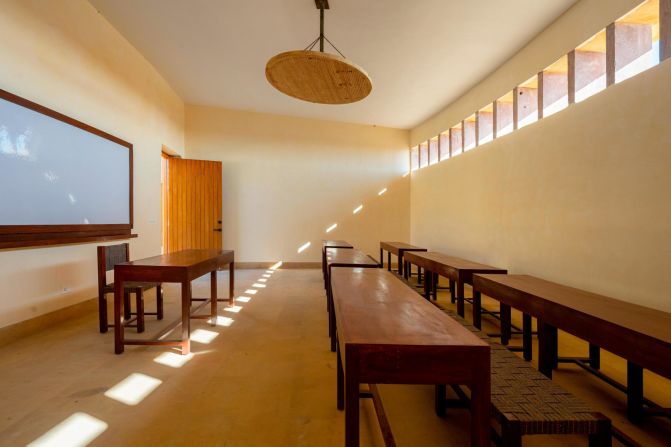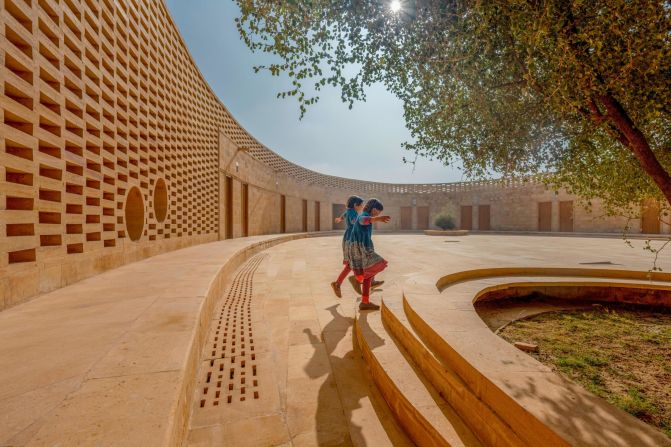In the north Indian desert town of Jaisalmer, also known as “The Golden City” for its array of yellow sandstone architecture, temperatures can reach approximately 120 degrees Fahrenheit (49 degrees Celsius) at the height of summer.
Here, buildings have long been designed to adapt to the heat, a tradition that New York architect Diana Kellogg has followed with her work on the Rajkumari Ratnavati Girls’ School.
The project, which is meant to empower women and girls through education in a region where the female literacy rate is the lowest in India, was commissioned by CITTA, a US non-profit organization that provides economic and education support to women in remote and marginalized communities. It’s the first step in a three-part architectural project that will also include a women’s cooperative center and an exhibition space.
Named the 2020 “Building of the Year” by Architectural Digest India, the eco-friendly sandstone school opened in November 2021 and 120 girls are currently enrolled in its curriculum, according to Kellogg.
Natural cooling
Designing a comfortable learning space can be challenging in the heart of the Thar desert, where climate change is making drought spells longer and more intense. Kellogg, who usually designs high-end residential projects, was motivated by a 2014 trip to Jaisalmer, and wanted the building to symbolize the hope and resilience of the desert by merging aspects of traditional Jaisalmer architecture with a modern design.
“There are methods to cool spaces that have been used for centuries. What I did is I put them together in a combination that worked,” Kellogg said, adding that indoor temperatures at the school are approximately 20-30 degrees Fahrenheit lower than the outdoors.
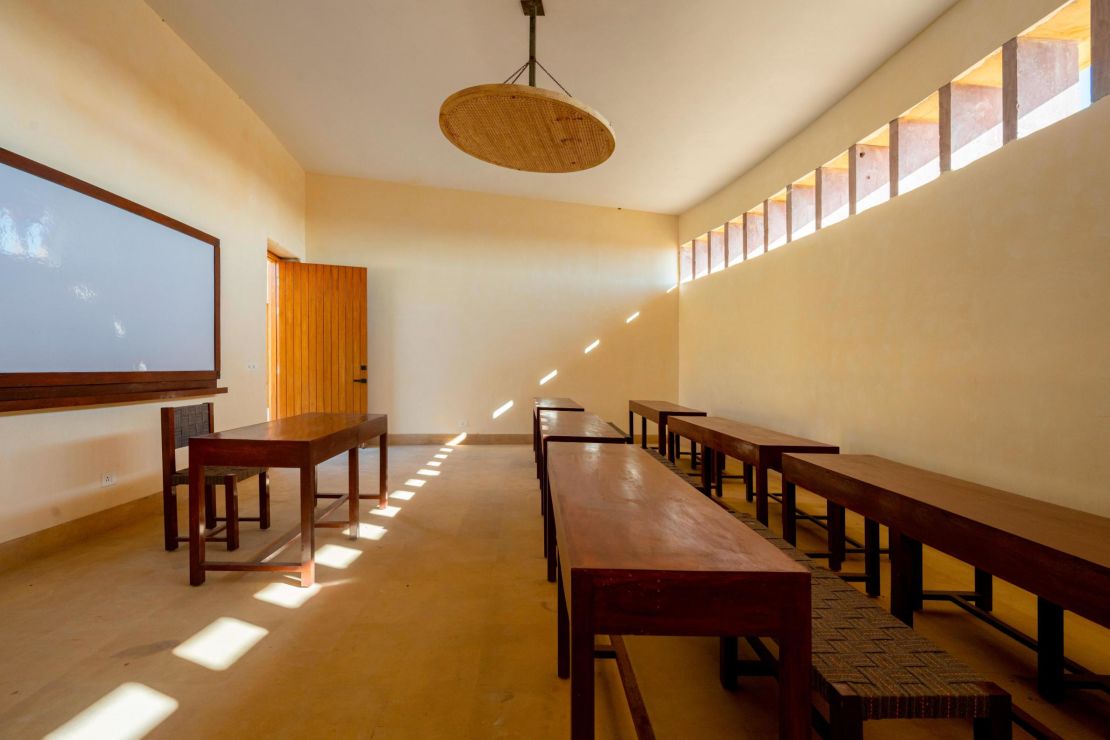
For the structure, she opted to use locally sourced sandstone – a climate-resilient material that’s been long used for buildings in the area, including the Jaisalmer Fort, a part of the city that hosts one fourth of its population and is a UNESCO World Heritage site.
“It’s so abundant in this area. It’s very reasonable (in price) and the extremely talented stonemasons are just magicians with the stone,” Kellogg said. “It actually keeps the heat out and also keeps the coolness out at night.”
Among the traditional techniques Kellogg incorporated into the design is lining the inner walls with lime plaster, a porous and natural cooling material that helps release any trapped moisture resulting from humidity. Inspired by other buildings in the region, she also installed a jali wall — a sandstone grid that enables wind to accelerate in a phenomenon called the venturi effect, cooling the courtyard space while also providing shade from the sun. High ceilings and windows release rising heat in classrooms, while a solar panel canopy provides shade and energy.
The structure, which is angled in relation to the prevailing winds, has an elliptical shape, chosen for its ability to capture and circulate cool air, but also for its symbolic connotations of femininity, matching the ethos of the project. Kellogg calls it “a big, tight hug.”
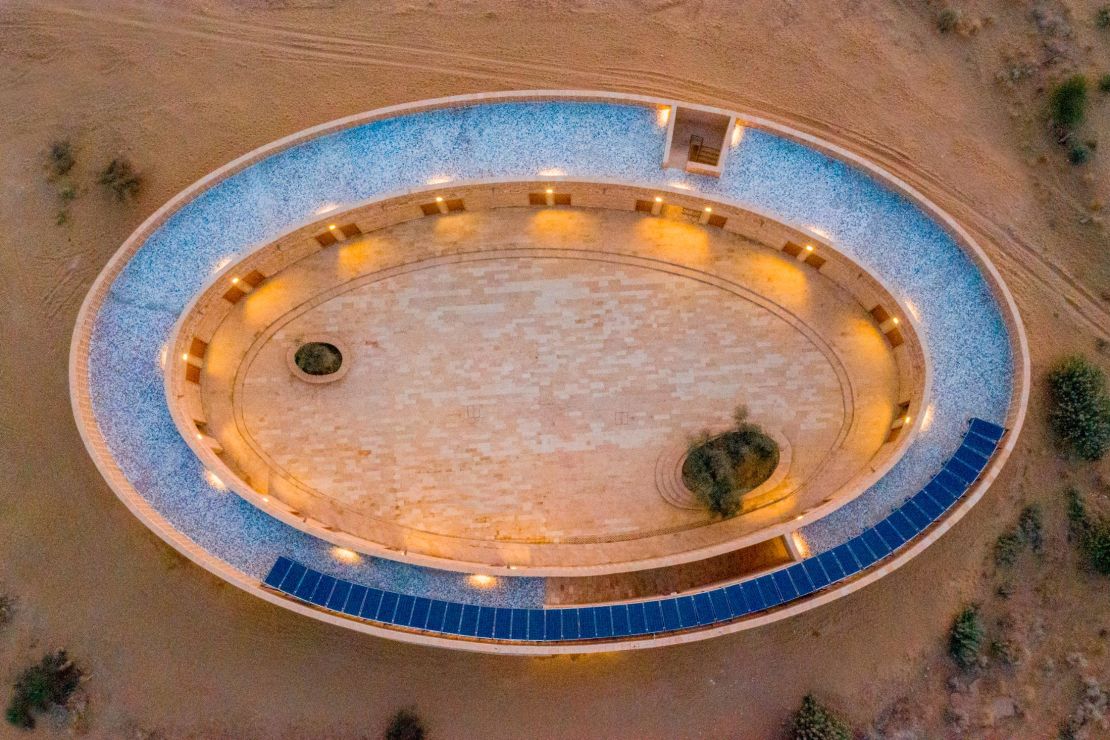
Comfort in sustainability
While many of the cooling techniques used at the school could be applied elsewhere in principle, their effectiveness and sustainability would vary from site to site, Kellogg admits. Particular wind directions and different sandstones would regulate temperatures differently to the materials found and used in Jaisalmer, for example.
Air conditioning isn’t used anywhere in the building, not just because of its environmental impact but because it isn’t common in the area. By adopting traditional and natural cooling mechanisms that the students are familiar with instead, she believes they can get sense of comfort from their surroundings, leading to greater confidence.
“I’ve seen it myself over the last three, four months,” she said.
“The change in the girls, from being quite shy to being these bright lights that are devouring whatever kind of information you put in front of them.”
